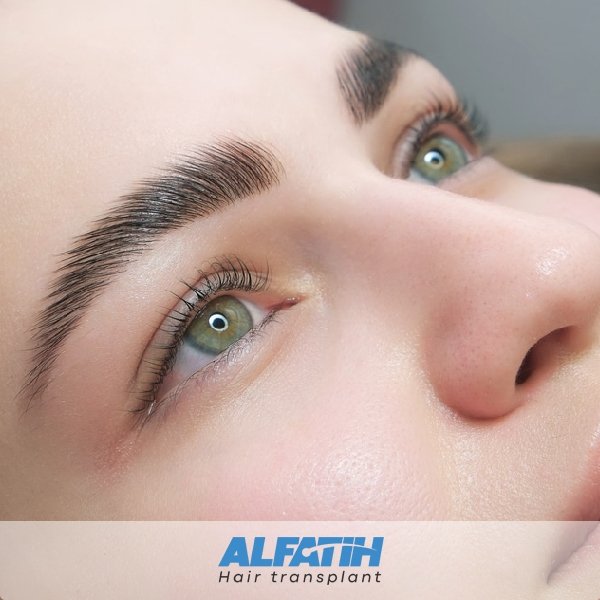The process of eyebrow hair transplantation was developed after the emergence of hair transplant operations several years ago to solve the problem of light eyebrows that many women suffer from. Although there are similar factors between the two operations, there are also very important fundamental differences that determine the success and safety of the process and to determine all the circumstances of this process Aesthetics Follow us in this article.
An eyebrow transplant is a cosmetic procedure designed to replace lost eyebrow hair and improve their shape, density, and appearance. This procedure can be especially beneficial for individuals who have lost eyebrow hair due to over-plucking, trauma, medical conditions, or genetic factors. Here’s an overview of how an eyebrow transplant is done:
Pre-Procedure Consultation
- Medical Evaluation: A thorough medical assessment to understand the cause of eyebrow hair loss and ensure the patient is a suitable candidate for the procedure.
- Design and Planning: Discussion of the desired eyebrow shape and density. The surgeon will design the new eyebrow shape that complements the patient’s facial features.
Eyebrow Transplant Techniques
The technique used for eyebrow transplantation is similar to those used for scalp hair transplants, typically Follicular Unit Extraction (FUE).
Follicular Unit Extraction (FUE)
- Donor Area Preparation: The donor area, usually the back of the scalp, is trimmed, and local anesthesia is administered.
- Follicle Extraction: Individual hair follicles are extracted from the donor area using a small, punch-like instrument.
- Recipient Area Preparation: The recipient area (eyebrows) is numbed with local anesthesia.
- Graft Placement: Tiny incisions are made in the eyebrows, and the extracted hair follicles are carefully implanted. Attention is given to the natural direction and angle of eyebrow hair growth to ensure a natural appearance.
Post-Procedure Care
- Initial Care: Patients are provided with detailed instructions on how to care for the transplanted area. This includes gentle washing and applying any prescribed medications to prevent infection and reduce swelling.
- Avoiding Trauma: Patients should avoid touching, scratching, or rubbing the eyebrow area.
- Activity Restrictions: It’s advised to avoid strenuous activities, swimming, and direct sun exposure for a few weeks.
- Follow-Up Visits: Regular follow-up visits are necessary to monitor healing and hair growth.
Recovery and Results
- Initial Healing: Some redness, swelling, and crusting in the transplanted area are normal and usually subside within a week.
- Shedding Phase: Transplanted hairs may fall out within the first few weeks. This is a normal part of the process as the hair follicles enter a resting phase.
- Regrowth: New hair growth typically starts within 3-4 months. Full results, with mature hair growth, are usually visible within 6-12 months.
- Trimming: Since transplanted hairs are taken from the scalp, they may grow longer than natural eyebrow hair and might require regular trimming.
Considerations
- Natural Appearance: The success of an eyebrow transplant highly depends on the surgeon’s skill in placing the grafts at the correct angle and direction.
- Donor Hair: The quality and characteristics of the donor hair should match those of the eyebrow hair as closely as possible.
- Realistic Expectations: It’s important for patients to have realistic expectations and understand that achieving the desired fullness may require multiple sessions.
Conclusion
An eyebrow transplant is an effective solution for those looking to restore or enhance their eyebrows. Consulting with a qualified and experienced hair restoration specialist is crucial to achieve the best results and meet aesthetic goals.



